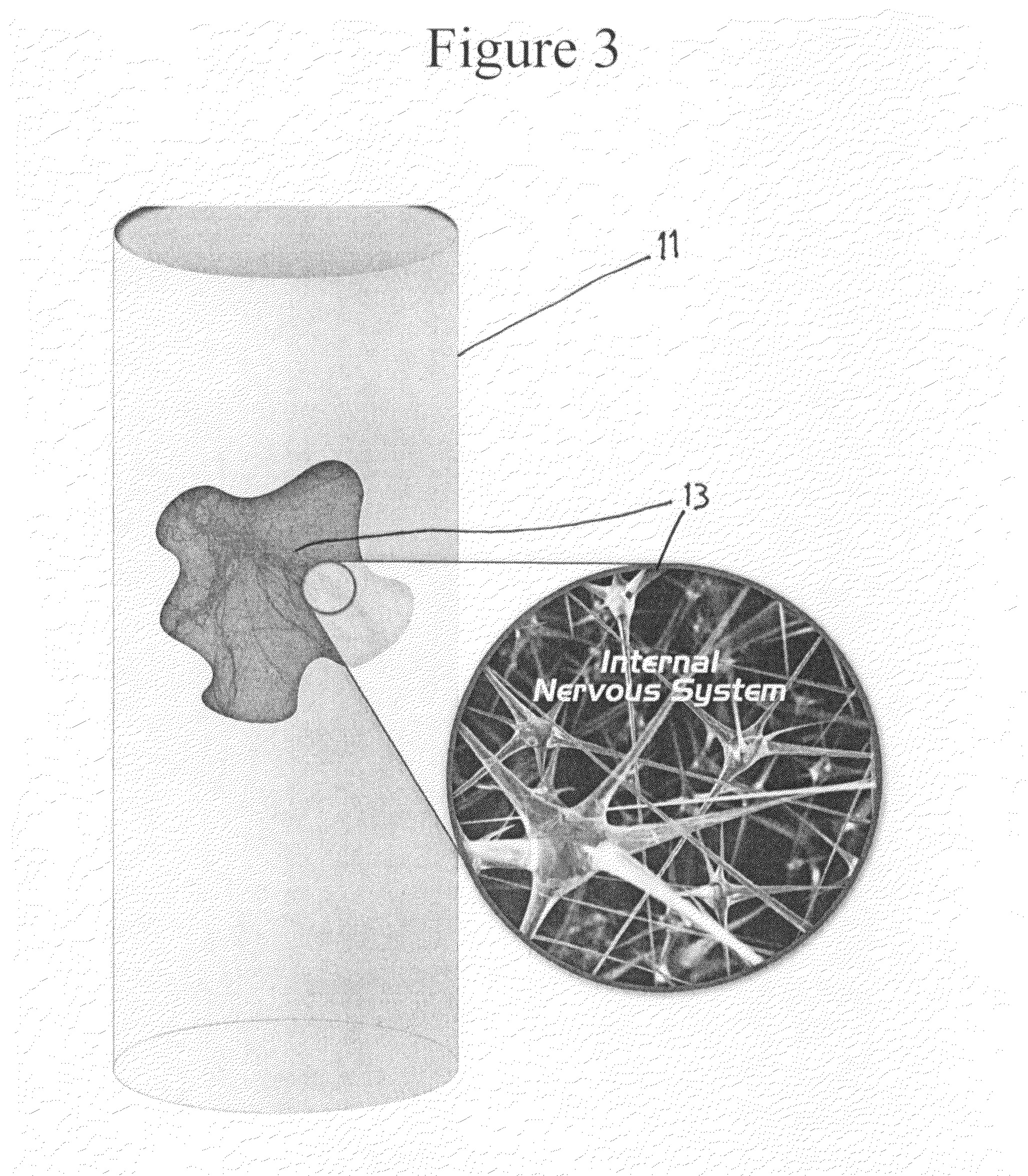Multifunctional cementitious nanocomposite material and methods of making the same
a nano-composite material and cementitious technology, applied in the field of reinforced cementitious composite materials, can solve the problems of weak concrete, tendency to crack, weak concrete, etc., and achieve the effects of high tensile and flexural strength, easy scaling up, and avoiding sacrificing existing concrete properties
- Summary
- Abstract
- Description
- Claims
- Application Information
AI Technical Summary
Benefits of technology
Problems solved by technology
Method used
Image
Examples
Embodiment Construction
[0037]In this invention, carbon nanotubes were stabilized and uniformly dispersed in water using a simple but novel procedure. The same procedure can be used to achieve stable and uniform dispersions of all types of carbon nanotubes (single walled, multiple walled, as prepared, functionalized, long or short) and other types of nanomaterials, such as nanoparticles, buckyballs, nanoclays etc. in water or in a matrix material derived from a metal, ceramic, polymer, or combination thereof.
[0038]One example of a method for properly dispersing carbon nanotubes in water in shown in FIG. 7. A hydrophilic emulsifier, thickener, additive or cellulose derived compound such as methylcellulose is added to hot water 35 where it separates and expands 37 with a temperature of about 80-90 degree Celsius. Methylcellulose swiftly dissolves 39 when the water cools down. This solution is stable. Prior to this process, carbon nanotubes are dispersed in a solvent (preferably acetone or an alcohol such as ...
PUM
| Property | Measurement | Unit |
|---|---|---|
| axial Young's modulus | aaaaa | aaaaa |
| hydrophilic | aaaaa | aaaaa |
| mechanical | aaaaa | aaaaa |
Abstract
Description
Claims
Application Information
 Login to View More
Login to View More - R&D
- Intellectual Property
- Life Sciences
- Materials
- Tech Scout
- Unparalleled Data Quality
- Higher Quality Content
- 60% Fewer Hallucinations
Browse by: Latest US Patents, China's latest patents, Technical Efficacy Thesaurus, Application Domain, Technology Topic, Popular Technical Reports.
© 2025 PatSnap. All rights reserved.Legal|Privacy policy|Modern Slavery Act Transparency Statement|Sitemap|About US| Contact US: help@patsnap.com



